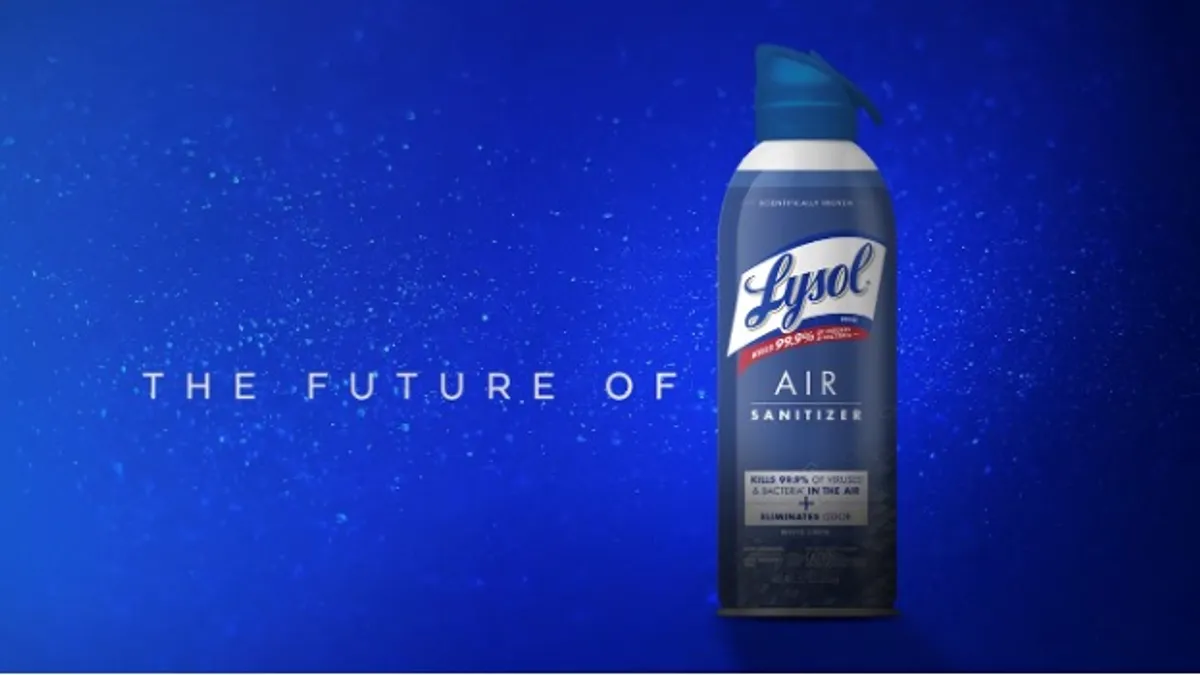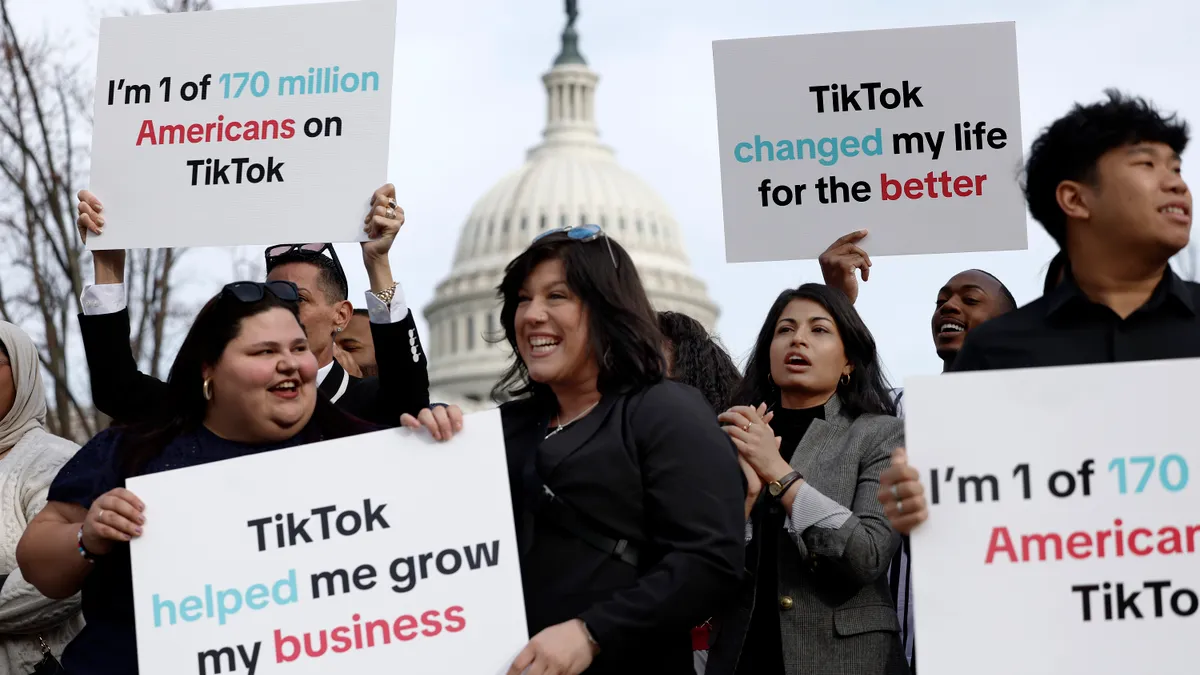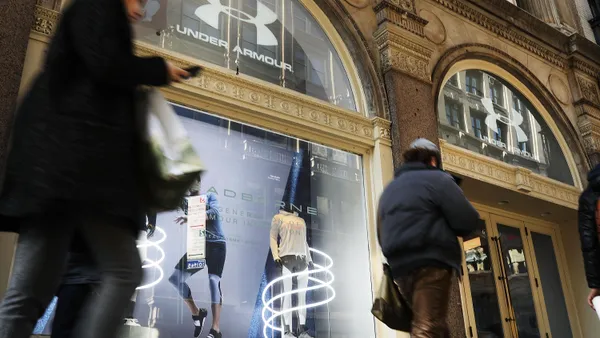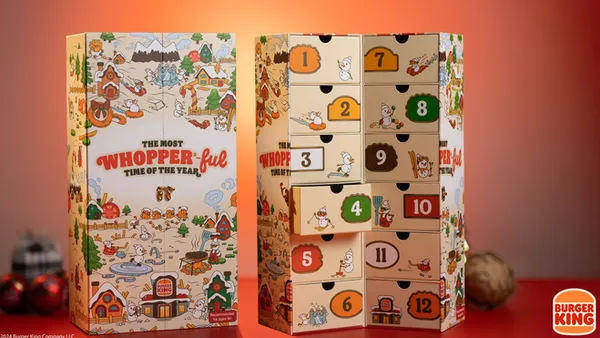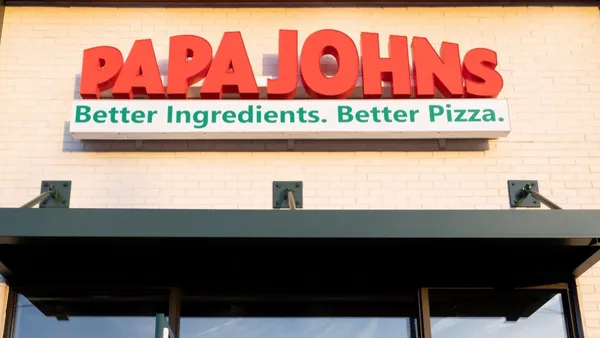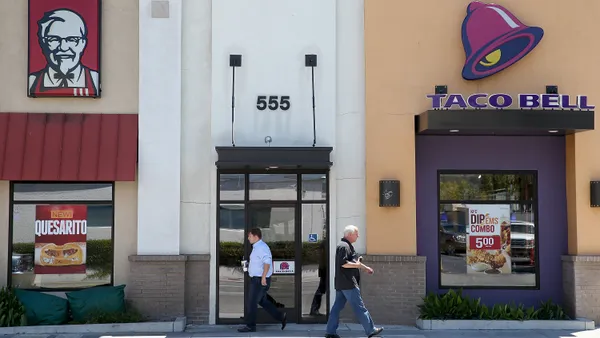Dive Brief:
- Lysol is introducing a new product that the brand claims can kill 99.9% of airborne viruses and bacteria, per information shared with Marketing Dive. Lysol Air Sanitizer is the first and only such product to receive EPA approval to make such claims.
- Marketing in support of the launch centers on the theme of “Scent Can’t Sanitize,” digging at air freshener competitors that can eliminate odors but not germs. Visual storytelling illustrates how air can become contaminated and Lysol Air Sanitizer’s role in getting rid of potentially harmful pathogens.
- Lysol will bring the campaign to life later this year via an immersive karaoke activation that depicts the number of germs that appear in the air when consumers sing their favorite songs. Digital and influencer marketing elements round out the media push.
Dive Insight:
Lysol is capitalizing on heightened consumer awareness around air cleanliness following the tumultuous pandemic years. From wiping down groceries and mail to sharper anxiety around every cough and sneeze, many people have altered their sanitation habits in ways that could benefit CPG brands even as life returns to normal. Indeed, 85% of surveyed Americans plan to keep the same cleaning habits they adopted during the COVID-19 pandemic, according to 2021 findings from the American Cleaning Institute cited by Lysol.
Lysol, which saw a boost in sales and awareness earlier in the pandemic, is recognizing those potentially shifted behaviors with the new Lysol Air Sanitizer. Boasting that it can kill 99.9% of airborne germs and with the EPA stamp of approval, the Reckitt-owned company is pitching the product as “the future of air.” The idea is to combine the improved scents of air fresheners with the practical value offered by surface disinfectants.
A new marketing campaign is geared heavily toward demonstrating how the product works via visual storytelling. Video spots depict a child coughing and a dog vigorously shaking its head as if drying off, showing a hint of particulates spreading. The animation of viruses and bacteria becomes more prevalent before Lysol Air Sanitizer makes them disappear with a spray. Lysol will bring the concept to life through the immersive karaoke activation later this year, while ads are running on digital, linear and connected TV.
Lysol Air Sanitizer is available in three fragrances — White Linen, Simple Fresh and Light Breeze — while messaging tackles air freshener competitors head-on with the “Scent Can’t Sanitize” theme. Lysol’s product website has a three-step guideline for getting the air sanitizer to work effectively. The process involves closing a room’s doors and air vents, spraying “into the center of the room’s ceiling in a sweeping motion for 30 seconds” and then resuming normal air ventilation.
Sales of the household cleaning product category are expected to increase by nearly $15 billion between 2022 and 2027, according to research from Technavio. That hike will largely be driven by product innovation and technology, including “introducing new spray forms of products during the product processing and packaging stages.”
Lysol competitor Clorox last November launched a new brand platform, “Start Clean,” that emphasized the importance of a clean space for physical and mental health. The messaging overhaul — the brand’s first in five years — came as the company’s stock price took a hit as consumers returned to pre-COVID clearing habits.


